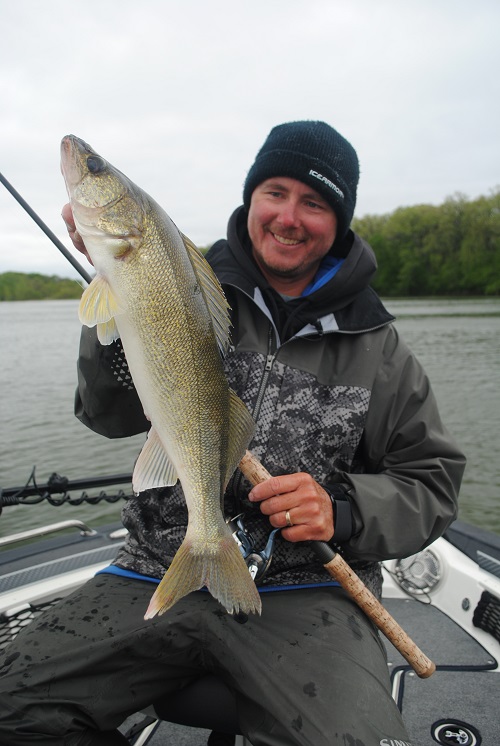 Different people go about their fishing in different ways. Some anglers like to consider every reason why a fish was caught on a certain bait, was in a particular location at that time, and why that fish decided to bite just then. That’s great. Curious anglers catch lots of fish and often are the leaders in fishing education. Other anglers just want to go fishing. They don’t want to analyze why they caught a fish, they just want to catch’em. Nothing wrong with that. However, if these folks were a little more interested in why they’re catching fish the way they’re catching them, they would probably catch more fish, but again, fishing is different things to different people.
Different people go about their fishing in different ways. Some anglers like to consider every reason why a fish was caught on a certain bait, was in a particular location at that time, and why that fish decided to bite just then. That’s great. Curious anglers catch lots of fish and often are the leaders in fishing education. Other anglers just want to go fishing. They don’t want to analyze why they caught a fish, they just want to catch’em. Nothing wrong with that. However, if these folks were a little more interested in why they’re catching fish the way they’re catching them, they would probably catch more fish, but again, fishing is different things to different people.

Sometimes a simple approach to fishing is the most productive. I’ve been reminded of that fact several times this summer, and I often think back to fishing trips of the past that were memorable not just for the catching, but also how we caught them.
A while back we were on a large Midwest lake that has an outstanding walleye population. It was a lake like many lakes across walleye country. The walleyes were on rock humps in depths from six to ten feet. We employed a very simple rig. After anchoring just upwind of the hump, we tied a hook to our line and crimped a medium sized splitshot onto the line above the hook about eighteen inches. We added a leech, cast to the hump, and reeled back in slowly, giving the rig lots of stops along the way. Every five or ten minutes we’d catch a nice walleye. Pretty simple stuff. We did add one twist to the rig. The hook had to be a Northland Super-Glo Attractor Hook in either orange or chartreuse. More often than you might think, color plays a big role in how many fish we catch.
There were other boats working similar humps close to us. They were backtrolling and front trolling with crankbaits and spinners and all sorts of other rigs. They didn’t appear to be catching much though. That’s because their baits were out of the fish zone much of the time. Our baits, due to our anchored position and slow presentation, were always in the fish zone, and that makes it much more likely that you’re going to get bit. The walleyes wanted to get caught, they just didn’t want to work too hard to eat the bait. If we let the leech wiggle on the walleye’s nose for a few seconds, the leech was eaten. If it went by too fast, it didn’t get bit.
We did use some technology on this trip. We relied on the sonar in our boat to find the best spots and the best “spot on the spot”. Without sonar, we wouldn’t have been nearly as successful. In fact, we probably wouldn’t have found the spots that we fished. The best spots were the smallest spots. Still, you don’t need sonar with all the gadgets to find the fish. Raymarine makes a complete line of sonar, from the basic to the best. You can get started with a very nice unit at a very affordable price. Even the most basic unit will help you catch more fish.
And, there are times when, if you want to catch more and bigger fish, you will need more than a hook and a splitshot. That’s the fun part of fishing: You can make it whatever you want it to be. Sometimes I like simple, sometimes I like the more high-tech stuff. As long as you’re enjoying your time on the water, you’re fishing the right way.
To see the newest episodes of Fishing the Midwest television, go to fishingthemidwest.com If you do Facebook, check us out for a variety of fishing related things.
by Bob Jensen
